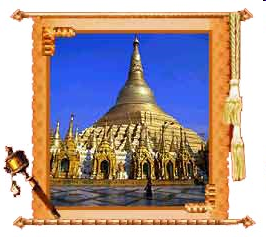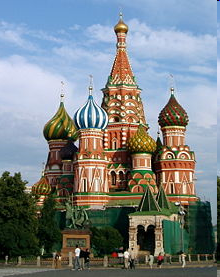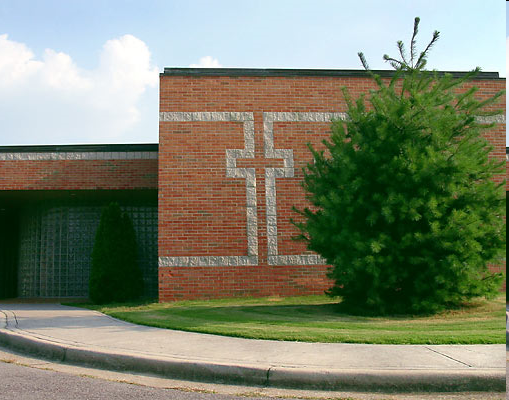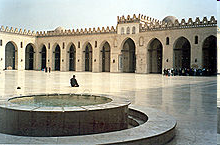Introduction
Various religious architectural structures were developed as early 1400 BC; in which various religions have been associated with them for a long period up to date. In this paper, a critical appraisal of various architectures in Buddhism, Christianity and Islamic religions and their significance will be presented.
Perhaps, these religious architectural structures have great significance in the religions associated with them; as they portray some untold beliefs and ideas that constitute such religious organizations. More specifically, each religious architectural structure can be described to be having a number of explanations concerning the beliefs and rituals of such religions. Among the many religious organizations in the world, each of one of them has its architectural designs and buildings associated with it; in which their ways of living are associated with (Behrens 100 – 127).
The Architectural Structures in Buddhism Religion
In Buddhism religion, various architectural structures like Stupas which are oldest in Buddhism and Pagodas which are major form of architectural structures in Buddhism have been used for long time up to date.


In Buddhist religion, various architectural structures have been developed and associated with the religion for more than 700 years; where the structures depicted the uniqueness of Buddhists. Initially, Buddhism originated from Indian culture; where Buddha teachings were strongly emphasized. In this regard, there are two basic architectural structures associated with Buddhism which include the Stupas and the Pagodas. As Buddhism is an old religion, the architectural structures associated with it have developed sequentially from one era to another; indicating various beliefs and values of that religion. In this regard therefore, the followers of Buddhism have been associating themselves with these architectural structural which represented better, their way of spiritual life up to date (Ajanta 143 – 155).
In this case, Stupas are among the oldest architectural structures in Buddhism; whose main function was to safeguard the historical object of Buddha, the founder of Buddhist religion. As depicted by the structural appearance of Stupas, the relics displayed represent a religion whose belief in their gods was endless and relishing. In this regard, the symbolic representation of these architectural structures meant an endless reliance on their gods; whom they believed never let them down. One of the most significant features of Stupas is that, they were conical in shape and had broad base indicating the massive strength of their gods. In this case an example of a Stupa is Jetavanaramaya which is a brick-clad in Sri Lanka (Ajanta 143 – 155).
On the other hand, Pagodas formed the major form of Buddhism architectural structures; where they were modified structures and incorporated specific symbols in Buddhist religion. Perhaps, Pagodas symbolized royalty and were constructed to form structures like an umbrella, symbolizing the Buddha. In fact, Pagodas with time became so deeply incorporated in Buddhism that; they became inseparable structures in the countries which practice Buddhism like in India, Southern Asia and Korea among others. As depicted in Pagodas, the erected towers on them has been believed to represent the five basics of the society which include, air, fire, water, soil and ether. Further, the outside profile of pagodas represented the domicile of their gods and the hub of the creation. More so, the internal subdivisions of the Pagodas represented the periphery for various activities like offering of sacrifices, confession of sins and thanks giving among others. Generally, a Buddhist architectural structure became divergent in style, and with time dominated the northern countries’ art in building and prevails even today. On this basis, a good example here is the Mahamuni Pagoda which is found in Mandalay (Ajanta 143 – 155).
The Architectural Structures in Christianity Religion
In Christian religion, various architectural structures like the church building and the cross-used to represent the Christians’ beliefs and practices.


In Christian religion, various architectural structures have also been developed in response to the beliefs and practices by its followers. From the onset of Christianity several centuries ago up to date, Christians have developed various architectural designs; in which the most significant structures developed include the highly decorated churches and the cross. Generally, the decorations in various churches like the Salisbury Cathedral church, represents the ultimate ideality expected of all Christians and the life they ought to lead especially in this awful society. In this case, these structures were used to depict various values and beliefs that Christians had and still have, whose their main purpose was to gather people together for various encouragements. As the structure of the buildings depicted, the symbols found within such buildings had one or two interpretations (Schloeder 87-113).
Certainly, the cross on the Basilica of the early church was developed during the early Christendom when the persecution of Christians in Rome was taking place. From that time, various churches were built and a cross was always included at one end of the church, which was always elongated. As it was interpreted, the cross on the church buildings indicated the death of Jesus Christ whom they believed had come to redeem them from their sins. After passing a hard time of tribulations, Christians found it crucial to establish a the cross on the church buildings which would reflect their faith and hope in their God. In this regard, this architectural structure was adopted by all Christians corresponding to public and majestic forms; as their God was not selective and offered for all people to come and worship Him. Being a large hall which was rectangular in shape, Basilica was meeting point for all Christians where they worshiped their God. It is of great importance to note that; the cross was always fixed on one end of the church which extended upwards above the roof of the building. As indicated earlier, this cross indicated the death of Jesus Christ; whom they believed had come to redeem them from their sins. On the sides of the church, there were also windows and doors which had rounded corners indicating the smoothness, coherence and harmony that existed within the Basilica (Howard 12-29).
On the other hand, the various decorations on the church like the ones on the Salisbury Cathedral church, which was completed in 1265 AD, also represents the Christian architectural structures in the modern society. In fact, the Salisbury cathedral church is one of the most decorated public places in the world. As the building depicts, church represented the belief and the lifestyle by Christians that, they should live an ideal life which is pure and free from earthily practices as their God was Holy and righteous. As it was interpreted, God’s gracious actions were represented by the upward tower in the building which indicated His eternity and love to human race. To the Christians, the numerous decorations found in the church indicated purity and loyalty of their God whom they believed came down from heavens to commune with them during worship days. Further, the sub-towers on this building represent church leaders who ought to lead all the followers of Jesus in truth and sincerity. Lastly, the openings of the building are smoothly rounded at the corners which further reflects the harmony and peace expected of Christians in all aspects and wherever they are. Generally, the decorations in the Salisbury Cathedral church represents the ultimate ideality expected of all Christians and the life they ought to lead especially in this awful society. Generally, the numerous decorations on and in the church indicated that; the church is a holy place where the Christians went to meet with their God (Howard 12-29).
The Architectural Structures in Islamic Religion


Among the three religions, Islamic religion has been revealed to be having the widest range of both worldly and sacred styles since the foundation of the religion. On this basis, various influential designs and architectural structures in the Islamic culture have been revealed where the main architectural buildings include the ‘T-Type Mosque’ and the ‘Central Dome Mosque’. It has been revealed that, these types of Islamic structures form a foundation for the building of other buildings of less significance in the religion like domestic architecture among others. More so, among the other religions in the world, Islamic architectural structures have been revealed to be the most decorated and having the best designs (Schloeder 87-113).
In this case, the ‘Central Dome Mosque’ is one of the most decorated architectural structures in the Islamic religion; which forms the nerve center of worship among the Muslims. Being an old religion, Muslims were believed to be the most creative identities whose works of art and design were unique and exceptional. As it was revealed in their mosques, Muslims can be described as very creative in nature; where this creativity has been revealed in their highly decorated mosques. During the time of Muhammad, the architectural style of Islamic religion was remarkable in the world; in which they developed unique structures which had specially decorated patterns for the mosque. It is of great importance to note that; the decorations found in the Mosque indicated the endless supremacy and ability of Allah, in safeguarding his people. On a close study of Islamic Mosques, one would find that there is a high order of repetition, radiation and rhythm of patterns which further implies the peaceful and unchanging Allah. Generally, the Mosque has been revealed to be one of the most unique architectural structures in Islamic religion by being one of the most decorated structures in the world. In this case an example of the ‘Central Dome Mosques’ include the Mesquite Mosque in Cordoba, Britain (Cruickshank 38-77).
On the other hand the T-Type Mosques were made of a broad base and an elongated tower, which contained a bell. As the name suggests, the T-Type Mosques had a shape similar to small letter t, which was also smartly furnished and well decorated. Mosques of this type had numerous support pillars which made them very strong and durable. This could be interpreted to mean that; Allah, their God was protecting them endlessly as his power was unlimited and used many ways of communicating to His people. An example of T-Type of Mosques is the Hassan II Mosque in Casablanca, Morocco (Schloeder 87-113).
Conclusion
In general terms, various architectural structures found in different religions imply a lot in explaining the untold beliefs and values of its followers; as revealed in the cases of Buddhism, Christianity and Islamic religions. As it has been revealed, the various architectural structures in different religions have their significance; where they reflect the beliefs and lifestyles of such religions. By so doing, a religion becomes identified well in terms of the structures associated with it in various aspects. Generally, the architectural structures found in all religions impact a lot in the followers of such religions and the subsequent lifestyles they lead.
Works cited
Ajanta, Eduardo. “The world of Buddhism in Architectural Development”. New York:Prentice Hall Publishers. (2005): 143 – 155.
Behrens, Abouseif. “A History of Architecture and Its Culture”. New York: Macmillan Publishers. (2008): 100 – 127.
Cruickshank, Dan. “Sir Banister Fletcher’s History of Architechture”. London: Architectural Press. (1996): 38 – 77.
Howard, Fraud. “The mediaeval styles of the English Paris Church”. London: Routledge Publishers. (1937): 12-29.
Schloeder, Steven. “Architecture in Communion”. San Francisco: Ignatius Press. (1998): 87 – 113.